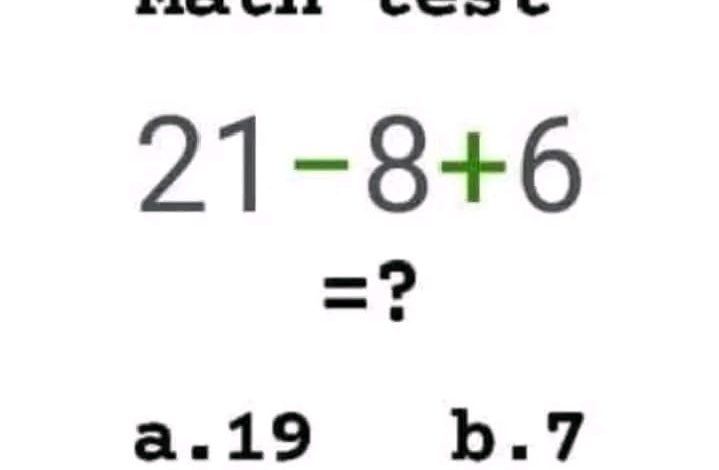Understanding Simple Arithmetic: A Closer Look at “21 – 8 + 6”

ADVERTISEMENT
Understanding Simple Arithmetic: A Closer Look at “21 – 8 + 6”
🌟 Introduction:
At first glance, the math problem in the image—21 – 8 + 6 = ?—may seem like a straightforward elementary question. However, math puzzles like these often highlight something more than just calculation skills. They test our understanding of order of operations, mental math agility, and sometimes even our attention to detail. Despite the simplicity of the numbers involved, the way we approach this equation can lead to very different answers if we overlook basic rules.
📊 Main Analysis:
Let’s break down the expression:
21 – 8 + 6
According to the order of operations (often remembered by the acronym PEMDAS: Parentheses, Exponents, Multiplication and Division, Addition and Subtraction—left to right), we perform addition and subtraction from left to right after handling any parentheses or exponents. Since there are no parentheses or exponents in this expression, we solve it as follows:
-
Start with 21 – 8 = 13
-
Then take 13 + 6 = 19
ADVERTISEMENT
So, the correct answer is: 19.
This is a good example of how simple math problems can become tricky when we forget the left-to-right rule for addition and subtraction. Many people may mistakenly try to do the addition first (8 + 6 = 14), and then subtract from 21, getting 7—which is also one of the answer options. But this is incorrect.
✅ Conclusion:
The math test image offers more than just a basic arithmetic question—it teaches us a lesson about paying attention to rules and sequence. Whether you’re a student, a teacher, or someone revisiting the basics, it’s a great reminder that math isn’t just about numbers; it’s about logic and structure. Always remember: in problems like this, solve from left to right when dealing with addition and subtraction. So the final answer to “21 – 8 + 6” is proudly 19—not 7. ✔️
Stay sharp, and keep questioning how you think through each problem. Sometimes the simplest ones offer the most important lessons.
ADVERTISEMENT




